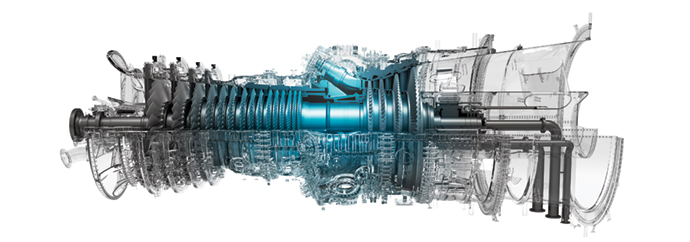International trade wars are not stopping huge multinational firms from plunking down lots of cash to invest in good old-fashioned, American-made, renewable energy; and, increasingly, these investors are choosing the scenic rural lands of the Rocky Mountain West.
From Idaho and Utah to Colorado, Montana and Wyoming, green is the new gold, with two of the largest ventures going to the pastoral backdrops of Idaho and Utah.
In Idaho, a global company with over two decades of experience in building renewable energy plants in Europe is making its first major investment in the U.S. — a $240 million biogas project in Cassia County.
GESS International, a multinational conglomerate with offices in London, the Ukraine, Raleigh, Fort Lauderdale and Oxnard, California, selected a rural farm area near Burley in Southern Idaho on June 4 for construction of six anaerobic digesters that are planned as part of the company’s first-tranche biogas plants in America.
GESS plans to begin construction later this year and begin operations by late 2020. The plants will be located on several dairy cattle feedlots in Cassia County and are expected to bring 100 new jobs to the region.
“GESS is excited to be a part of the welcoming community of Southern Idaho,” said Seth Daughety, grant coordinator for GESS International in Raleigh. “These biogas projects create a new revenue stream for area farmers and reduce the environmental impacts associated with the agricultural industry, while also producing a renewable energy that will reduce our fossil fuel use and create economic development for a wonderful area of Idaho. There is plenty of opportunity for these types of projects in such a cattle-rich area.”
Anaerobic digesters break down biodegradable material, such as manure, to produce renewable natural gas. The digesters will use 170,000 tons of dairy cattle manure and 80,000 tons of agricultural residues per plant from area farmers to produce 550,000 MMbtu worth of renewable natural gas. The amount of energy produced will be equivalent to the energy usage of 6,800 homes per year per plant.
Market Forces Fueling Biogas Plants
“We are developing projects all over the country,” says Daughety. “We are doing projects in North Carolina and Missouri. We are bringing Biogest technology to the U.S.” Biogest is an Austrian company that has done more than 145 biogas projects in Europe and 350 worldwide.
When asked why GESS chose Southern Idaho, Daughety said, “The condensed amount of dairy farms in the area attracted us. We are working with five different dairies there. Each has a huge amount of dairy cattle. One of those dairies has enough manure to support two projects. Plus, there is a huge amount of space and row crop area, and we can use the agricultural waste.”

Another selling point was access to a pipeline. “We are in negotiations with the Interstate Pipeline so that we can directly inject our natural gas into it and distribute it around the country,” says Daughety. “We are dealing with big utilities and other companies that need to reduce their carbon footprint. Utilities must have a certain portion of their energy come from renewable sources. Market forces are driving projects like this.”
Connie Stopher, executive director of Southern Idaho Economic Development, says her organization first learned about the project in mid-December of 2018. “It took about six months to go from project lead to project announcement,” she says. “The company is still looking at multiple sites in several U.S. states for more biogas generation facilities.”
Daughety confirmed that, noting that “we are always looking for more potential projects in America. We are doing a big undertaking right now. We are looking to have 20 projects in the first tranche of our pipeline. Once we get those done, we will look at more.”
The locations being scouted, he said, “deal predominantly with agricultural areas, such as swine farms in Missouri and North Carolina. We start out by site selecting animal feeding operations. We look at the utility connections and the natural gas pipelines in the area. We keep our checklist of needs within a 20-mile radius of the plant site.”
GESS may also expand into the chicken litter and turkey markets, he notes. “Arkansas, Missouri and Pennsylvania have huge turkey and chicken markets. We’re looking at large combined animal feeding operations in those states and others. The potential is there for plenty of these projects across America.”
What’s Inside the Salt Caverns?
GESS is just one of many international and domestic firms that are investing heavily into renewable energy projects across the Rocky Mountain West. In Central Utah, Mitsubishi Hitachi Power Systems (MHPS) and Magnum Development announced a joint venture on May 30 to create the world’s largest renewable energy storage project.
The grid-scale energy storage with renewable hydrogen production and usage will form the core of the Advanced Clean Energy Storage (ACES) project adjacent to the Intermountain Power Project in Delta, Utah. The ACES initiative will develop 1,000MW of 100% clean energy storage, a move designed to expedite a decarbonized power grid for the Western U.S.
MHPS has developed gas turbine technology that enables a mix of renewable hydrogen and natural gas to produce power with lower carbon emissions. MHPS aims to use 100% renewable hydrogen as a fuel source, enabling gas turbines to produce electricity with no carbon emission.

“We are always looking for more potential projects in America. We are looking to have 20 projects in the first tranche of our pipeline. Once we get those done, we will look at more.”
Magnum Development, meanwhile, owns and controls the only known “Gulf Coast” style domal-quality salt formation in the Western U.S. With five salt caverns in operation for liquid fuel storage, Magnum is continuing to develop its compressed air energy storage and renewable hydrogen storage options. By locating next to the Intermountain Power Project in Utah, the Magnum site is positioned to integrate seamlessly with the Western power grid.
The ACES initiative is being designed to serve the needs of 150,000 households for an entire year. To do that, ACES will deploy four types of clean energy storage at utility scale: renewable hydrogen, compressed air energy storage, large-scale flow batteries and solid oxide fuel cells.
“Central Utah is the ideal location for this project, and Utah is a business-friendly state for projects like this,” said Craig Broussard, CEO of Magnum. “Magnum’s site adjacent to the Intermountain Power Project is positioned to take full advantage of existing regional electricity grid connections, fully developed transportation infrastructure, ample solar and wind development capacity, a skilled workforce currently transitioning away from coal, and, of course, the unique salt dome opportunity.”

